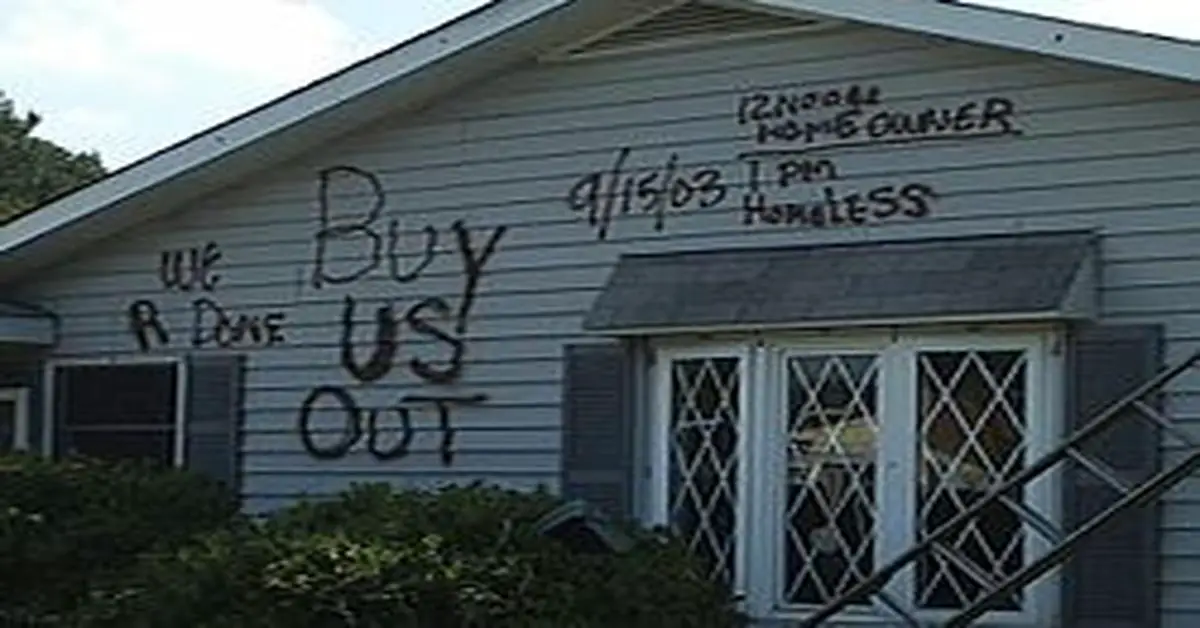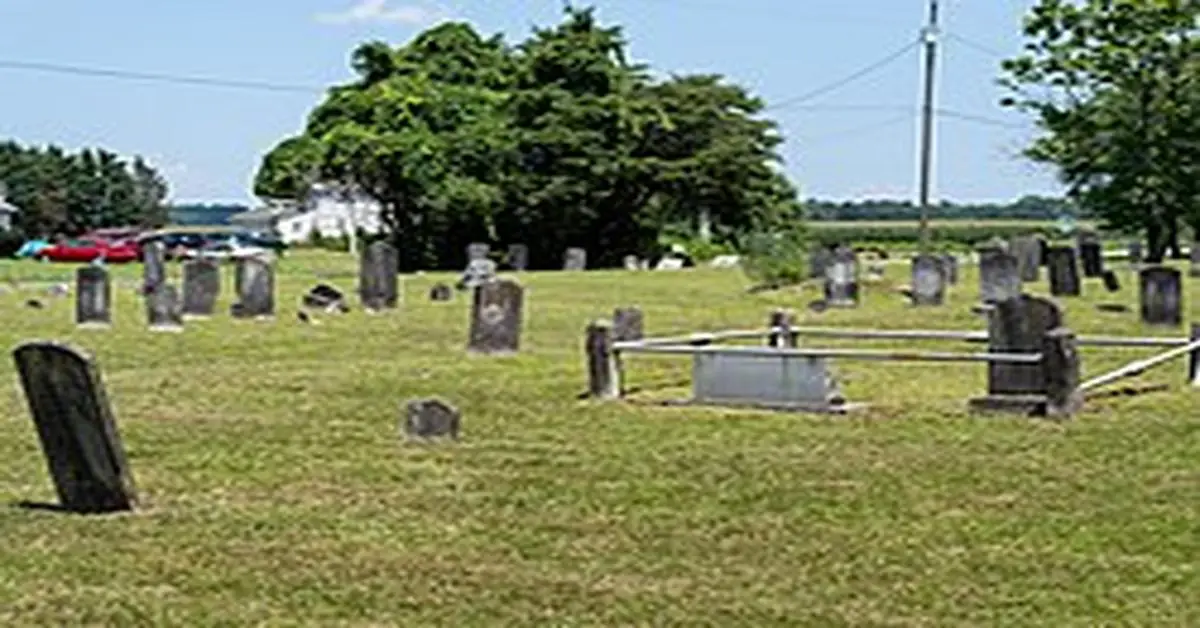Once a bustling neighborhood, Glenville, Delaware, now lies deserted and abandoned. The irony of this situation is that Glenville’s abandonment was not due to a natural disaster or economic collapse but rather a decision made by officials to protect its residents from the recurrent flooding caused by the nearby Red Clay Creek.
This decision, while intended to solve the problem, has ultimately led to the demise of the once-thriving community. Located on Route 4 west of Newport, Glenville was a neighborhood plagued by flooding for the past six years. The problem escalated during Hurricane Floyd in 2000 and Hurricane Isabel in 2004, prompting officials to make plans to abandon the flood-prone areas.
As of October 2004, the entire designated section of Glenville is abandoned and is being prepared into a park. However, the abandoned houses and their foundations remain, creating an eerie atmosphere of a ghost town in progress. In this article, we will delve into the history of Glenville, the reasons for its abandonment, and its current status.
Key Takeaways
- Glenville was a neighborhood plagued by flooding for decades, with significant floods dating back to the early 1900s.
- Glenville, Delaware, was officially abandoned after Hurricane Isabel, turning it into a ghost town in progress.
- The flooding caused by Red Clay Creek was too hazardous for human habitation, leading to the neighborhood’s abandonment.
- The area’s transformation into a park, such as a new recreational space, may benefit the community.
Location and Reason for Abandonment
Glenville, a neighborhood on Route 4 west of Newport, was abandoned due to excessive flooding caused by Red Clay Creek, a persistent problem for six years. The flooding was exacerbated by Hurricane Floyd in 2000 and Hurricane Isabel in 2004, prompting officials to make plans to abandon the flood-prone areas.
After Hurricane Isabel, the abandonment officially went into effect, transforming the neighborhood from a bustling community to a ghost town in progress. The effects of the flooding, caused by Red Clay Creek, were devastating for Glenville. The back of the neighborhood had always been prone to flooding, and the flooding caused by the hurricanes was the straw that broke the camel’s back.
Despite the efforts of officials to mitigate the problem, the neighborhood was ultimately deemed too hazardous for human habitation, leading to its eventual abandonment.
Current Status and Future Plans
The designated section of the area that was abandoned due to excessive flooding caused by Red Clay Creek is currently being transformed into a park with some houses still standing and all the foundations still intact.
The demolition crew has not yet gotten to some houses, leaving them standing as a reminder of the neighborhood that was once there. The area has a ghost town feel with most of it fenced off.
It is uncertain whether the foundations and streets will be kept or removed as part of the redevelopment plans.
The impact of the abandonment on former residents is unclear. It is unknown whether they were compensated for their homes or what options they were given for relocation.
However, transforming the area into a park, such as a new recreational space, may benefit the community. Overall, the redevelopment plans suggest that the area will no longer be a flood-prone neighborhood but a new public space.
Additional Information and History
Excessive flooding caused by Red Clay Creek has been a persistent problem in Glenville, leading to the abandonment and eventual transformation of the designated section into a park.
However, the area’s history goes beyond its recent flooding issues.
Glenville was once a thriving neighborhood that had been around for over a century.
Its name comes from Samuel P. Glen, the owner of a local mill that provided employment opportunities for the residents.
The neighborhood had its own school and post office, and it was even home to a baseball team that played in the local league.
Despite its early success, the area’s fate was ultimately sealed by its vulnerability to flooding.
Flooding has been an issue for decades, with records of significant floods dating back to the early 1900s.
However, the floods of the early 2000s, particularly those caused by Hurricane Floyd and Hurricane Isabel, prompted officials to make plans to abandon the flood-prone areas.
Although abandoning the designated section of Glenville was difficult, it was necessary to prevent further loss of life and property.
Frequently Asked Questions
What was the population of Glenville before it was abandoned?
Before its abandonment, population statistics for Glenville, Delaware, were not readily available. However, the neighborhood’s historical significance lies in its being a flood-prone area, resulting in its abandonment and conversion into a park.
Were any efforts made to relocate the former residents of Glenville?
Efforts were made to relocate the former residents of Glenville due to excessive flooding caused by Red Clay Creek. Relocation options were provided by the county or state, leading to the complete abandonment of the neighborhood in October 2004.
What kind of wildlife can be found in the area now that it is being converted into a park?
The area being converted into a park after the abandonment of Glenville provides a new wildlife habitat and an opportunity for ecological restoration. The specific types of wildlife in the area are unknown now.
Have any paranormal sightings or reports in Glenville since it became a ghost town?
While there are no documented reports of paranormal activity in Glenville, local legends suggest that the area may be haunted by the spirits of those who once lived there. However, these claims remain unproven and should be approached with skepticism.
What was the neighborhood’s original purpose before being built in a flood-prone area?
The information does not mention the Glenville neighborhood’s original purpose before being built in a flood-prone area. However, the area may have had an industrial history, and flood mitigation measures were planned after Hurricane Floyd.

